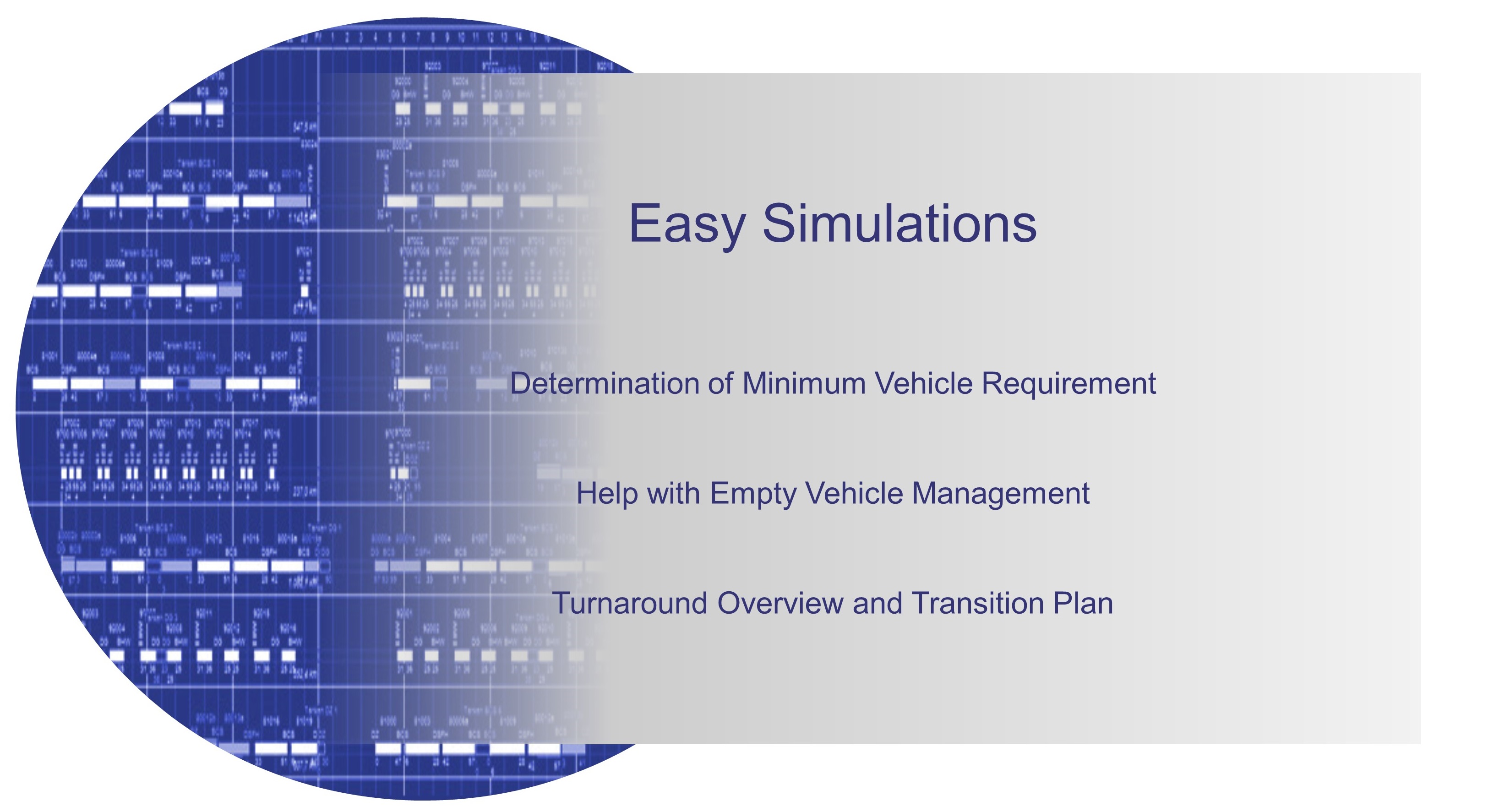Circulation Optimization
The public transport authority tendered a local transport network and as representative of an affording Train Operating Company you want to know, how many multiple units are to acquired? At the change of timetable some changes in regard to train path and traffic periods lie ahead and an adaption and optimization of the present circulation is needed? Or the infrastructure operator announces extensive construction measures on the line and you need to find operatively solutions divergent from the annual timetable, so that also in this situation there is enough rolling stock in good time for every train and on every day of operation - surely you want to avoid concurrently expensive increased demand for vehicles or wastefully compensation drives?
Then the iPLAN module Circulation plans is the answer to this and other questions.
When this trains were created in the graphic timetable and the train sections or vehicle combinations comply with the required seating capacities, then the programme can already help - especially in wide an complex networks - answer the question concerning the (at least) vehicle requirement, even before there is proposed a first circulation variant: The graphic vehicle deployment shows, how many vehicles - depending on the days of run - are on the way on the same time. The maximum of this value also represents the lower limit of the vehicle requirement - with less rolling stock it doesn't work. In the concrete circulation plan the demand will always be a little more because of vehicle swithovers and necessary compensation drives. In every case the circulation calculator allows a prioritization of the simulation for a minimum of vehicles.

Not always ist's the question concerning the minimization of the vehicle requirement paramount. Also the management of empty runs plays a role in cost-consious plannings. Additional empty runs cost both path fee and personal expenses. The circulation-related carry of train sections (like multiple units) capacitive not needed bydisclosed trains often is a solution, which however still costs additional operation effort and vehicle mileage. The iPLAN module circulation plan alterntively approves a priorization for less empty runs and proposes concrete trains which would be practical for the carry of train sections.
Vehicles are not always en route, they also need to be parked - while the turning time or over midnight. With the FBS circulation plan it's possible to find out, how many vehicles park there at the same time and over which period of time this is the case - with one click for every turning location spot. Together with turning overview / switchover plan it becomes clear, which short turnaraounds are feasible at the platform and to what extent capacities on the siding are needed to rent for parking.
